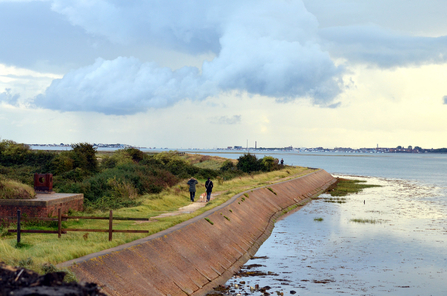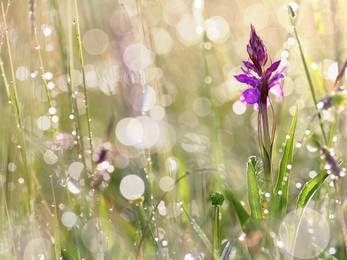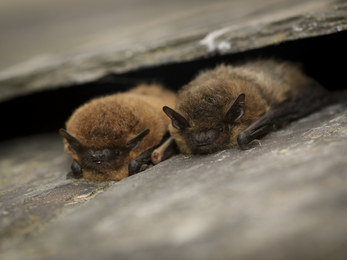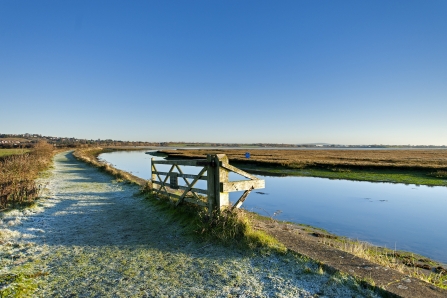Farlington Marshes is one of the Trust’s oldest nature reserves. A site steeped in history since its establishment in the late 18th Century when a series of small islands in Langstone Harbour were enclosed by a basic sea wall. Over the past 250 years, the site has had many and varied uses: grazing land, oyster fishery, racecourse (including a train station), ammunition dump and notably a major role during the Second World War in Operation Starfish as a diversionary bombing area to protect Portsmouth. In 1970, the site was acquired by the Portsmouth Corporation and after an application from the Hants & Isle of Wight Naturalists Trust the site became a nature reserve. In 1974, it became a Local Nature Reserve (LNR) and was designated a Site of Special Scientific Interest in 1985. Today, it is still owned by Portsmouth City Council and leased to Hampshire & Isle of Wight Wildlife Trust.
Vital habitat
The Trust, since its origins in the 1960’s, has been managing the site for its wildlife for over 60 years. Early conservation pioneers like Dave Billet and his wife Rosemary helped shape the site, a mantle which has been passed on over the decades with conservation management gradually improving the site into the vitally important habitat it is today. A haven for wildlife and people that is an exemplar of one of the country’s great coastal wetland sites.
Its success lies in its scale and infrastructure as well as its location. The seawall is multi-functional, protecting the site from inundation by the sea and providing an amazing walking route around the site, offering fantastic views across the reserve and into Langstone Harbour. Public access is limited to the seawall, a connected access track to the site building and cycle way and to some of the smaller field units, the Bushes and Point Field. This means that the majority of the site is left undisturbed, purely for wildlife. A closer look will reveal a mix of habitats across the site that includes, coastal grassland, saltmarsh, fen, reedbed, scrub, freshwater ponds and a saline lagoon. This combination of habitats provides a huge range of niches for wildlife to utilise.







